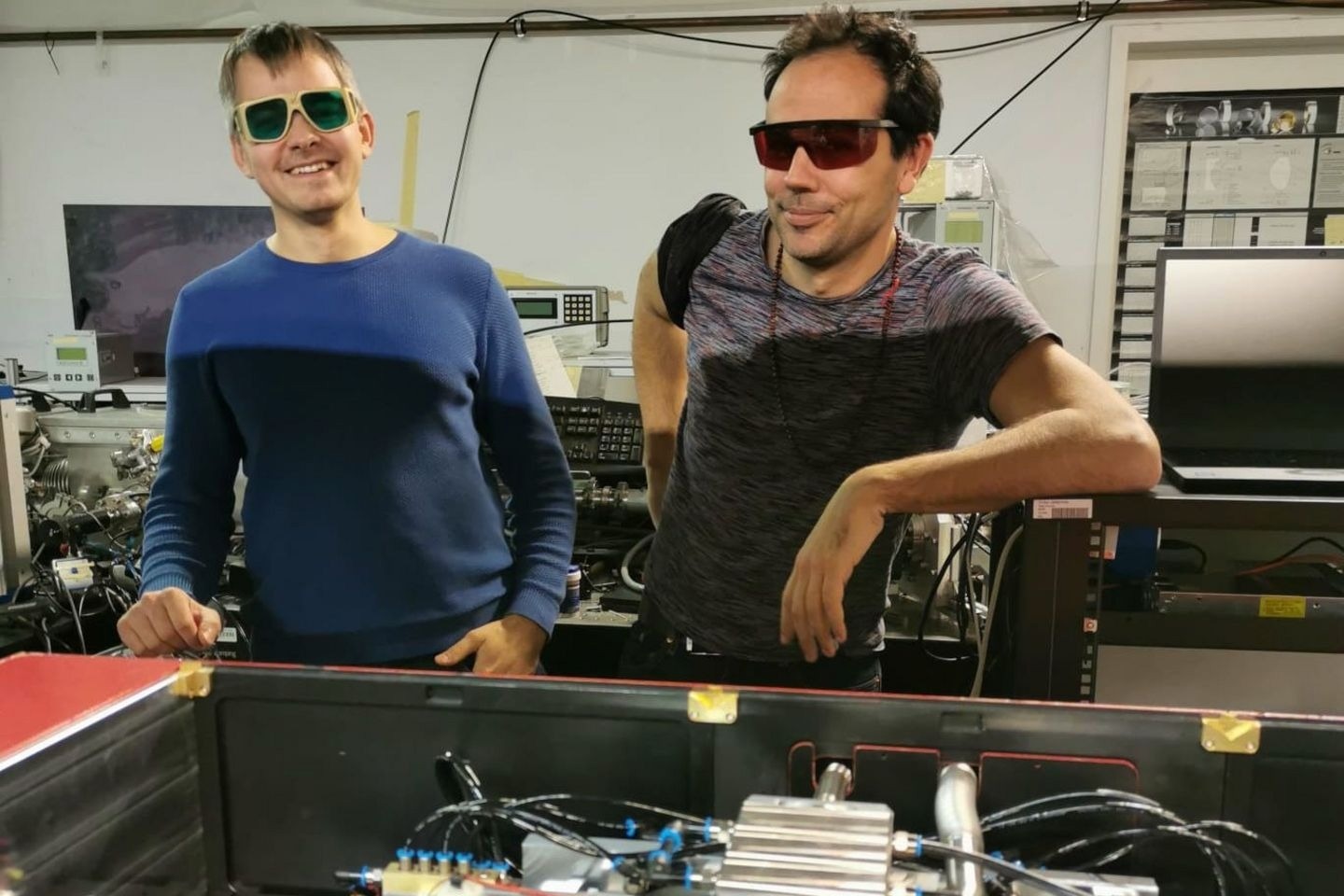At the Vienna University of Technology (TU Wien), a novel technology for producing X-Ray laser pulses has been developed.

Edgar Kaksis (left) und Paolo Carpeggiani. Image Credit: Vienna University of Technology.
The X-Rays utilized to analyze a broken leg in a hospital are easy to generate; however, in industry, X-Ray radiation of an entirely different kind is required—specifically, X-Ray laser pulses that are as short and high-energy as possible.
These X-Rays are utilized to produce electronic components and nanostructures and to track chemical reactions in real time.
It is challenging to produce strong and extremely short-wave X-Ray pulses in the nanometre wavelength range. However, a new and easier technique has been developed now at TU Wien (Vienna): the titanium-sapphire laser is not the starting point, which had mostly been utilized for this cause, but a ytterbium laser was. The vital trick is that the light is transmitted through a gas for its properties to be altered.
Long Wavelengths Lead to Short Wavelengths
The laser beam’s wavelength relies on the material in which it has been produced: in the molecules or atoms involved, electrons change from one state to another state with lower energy.
This makes a photon be emitted—its wavelength (and thereby its color) relies on how much energy the electron has lost at the time of its change of state. By adopting this method, various laser colors could be produced—from red to violet.
Still, for making laser beams with even much smaller wavelengths, unique tricks have to be applied: Initially, laser beams having a long wavelength are made and shot at atoms. An electron has been snatched away from the atom and expedited in the laser’s electric field.
Further, it turns back and collides once again with the atom from which it came, and thereby it could produce short-wave X-Rays. This method is known as “high harmonic generation.”
At first glance, the situation seems somewhat counter-intuitive. It turns out, in fact, that the larger the wavelength of the original laser beam, the smaller the wavelengths you can achieve in the end.
Paolo Carpeggiani, Institute of Photonics, Vienna University of Technology
The efficiency of X-ray radiation production also gets reduced in the process: if one wants to generate very short-wave radiation, its intensity turns very low.
Ytterbium Instead of Titanium Sapphire, Gas Instead of Crystal
To date, this method was almost always applied by using titanium-sapphire lasers and further increasing the wavelength of their radiation with unique crystals. This was done to produce the shortest possible X-Ray radiation via High Harmonic Generation.
The research group at TU Wien has currently developed an easier and simultaneously strongest method: an ytterbium laser. Ytterbium lasers are inexpensive, easier, and stronger compared to titanium-sapphire lasers, but so far, their performance in X-Ray production was comparatively lower.
The wavelength of the ytterbium laser’s radiation was initially increased at TU Wien—not only by transmitting this radiation via a crystal as usual but also by sending it via a molecular gas.
This increases the efficiency quite dramatically. Instead of the 20% we used to get, we get around 80%.
Paolo Carpeggiani, Institute of Photonics, Vienna University of Technology
Journal Reference:
Dorner-Kirchner, M., et al. (2023) HHG at the Carbon K-Edge Directly Driven by SRS Red-Shifted Pulses from an Ytterbium Amplifier. ACS Photonics. doi.org/10.1021/acsphotonics.2c01021.